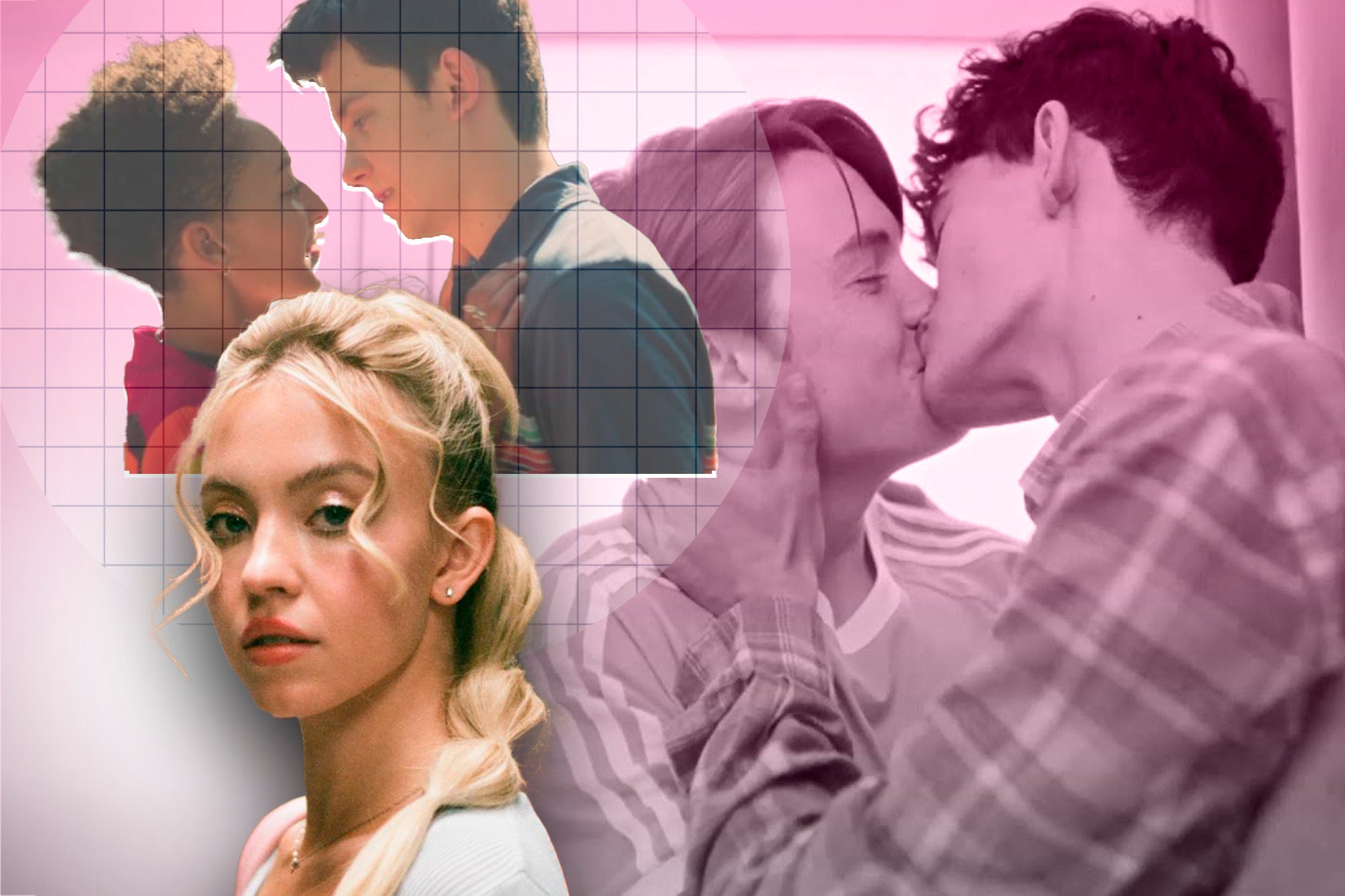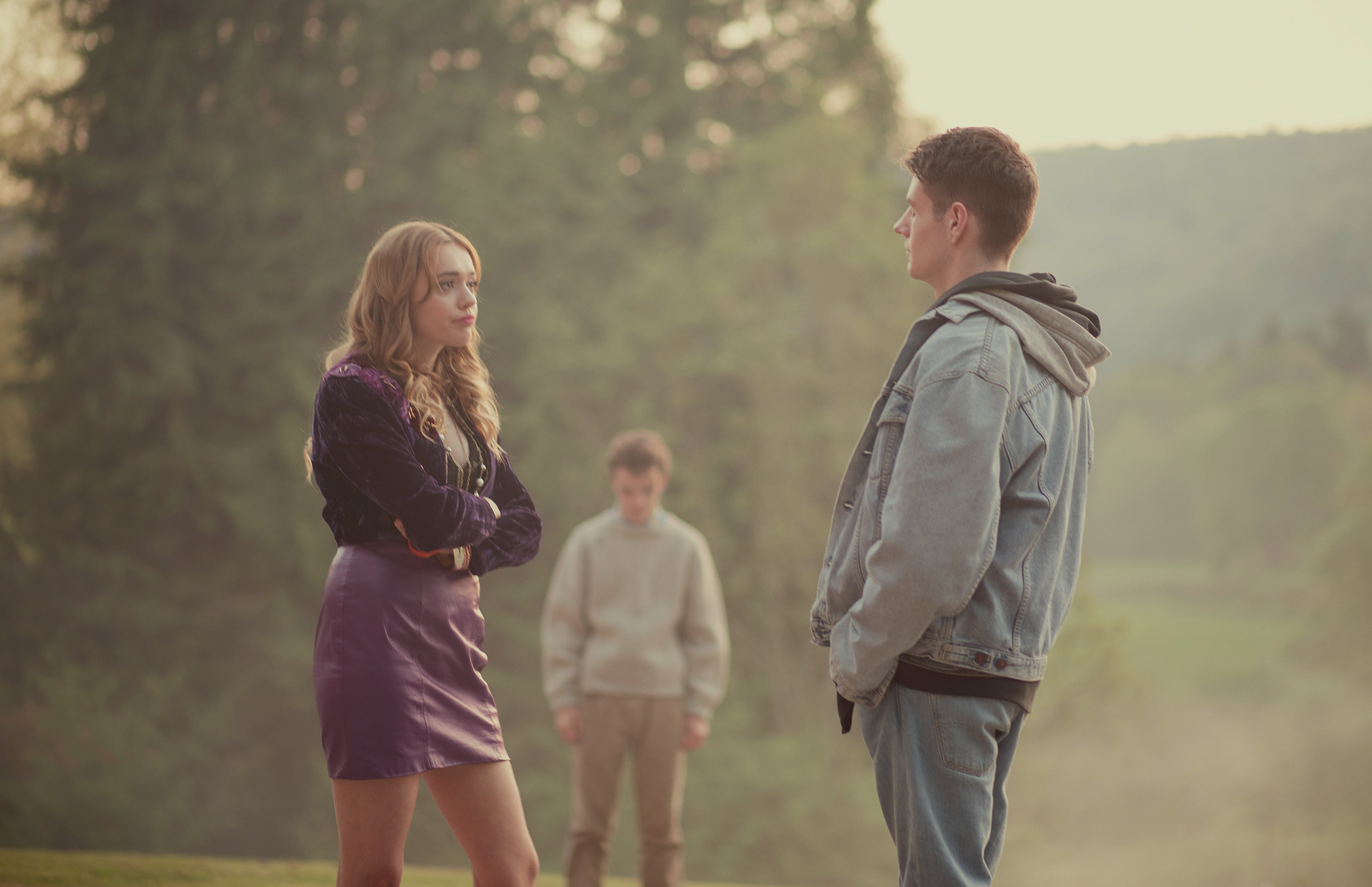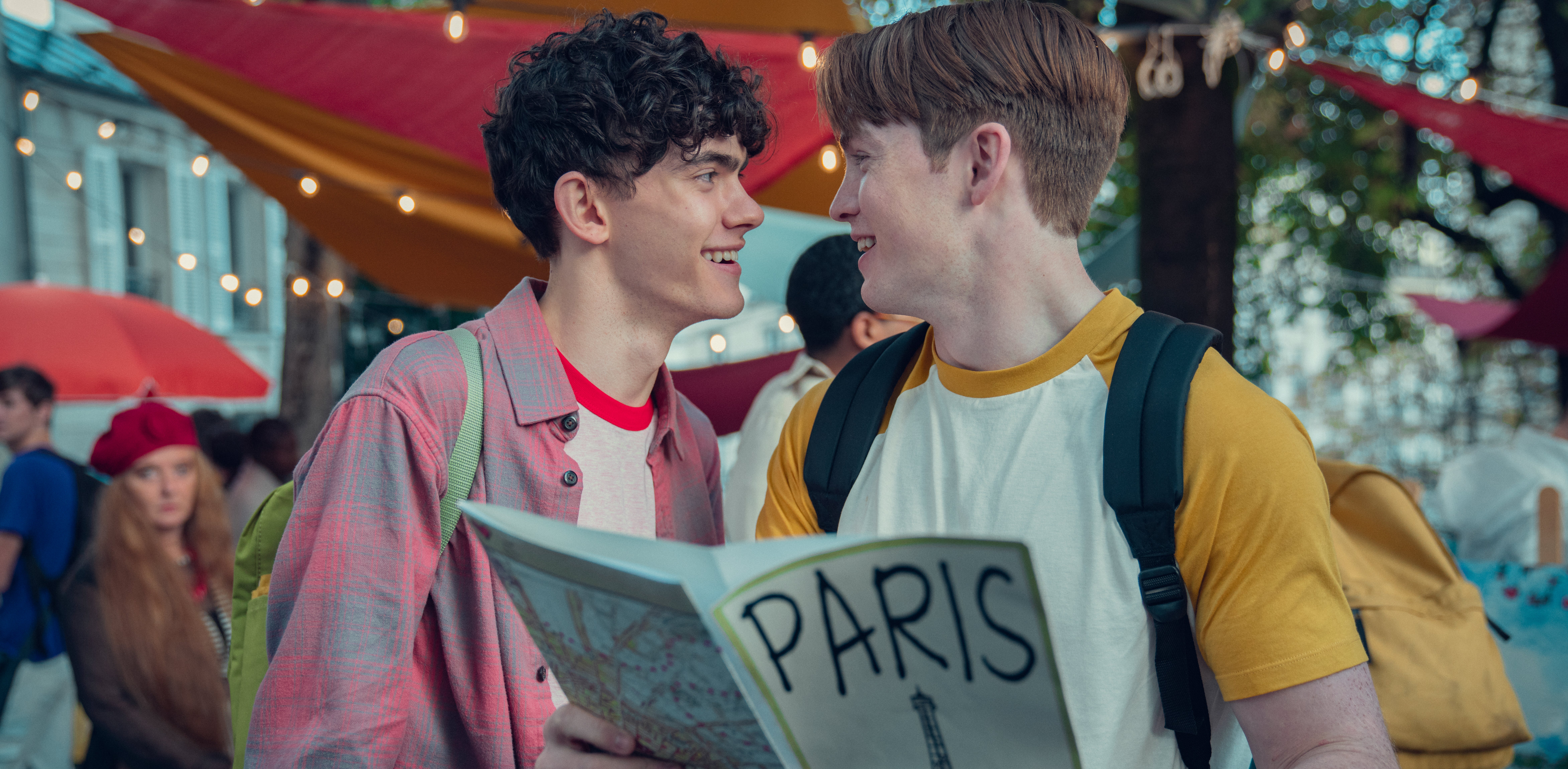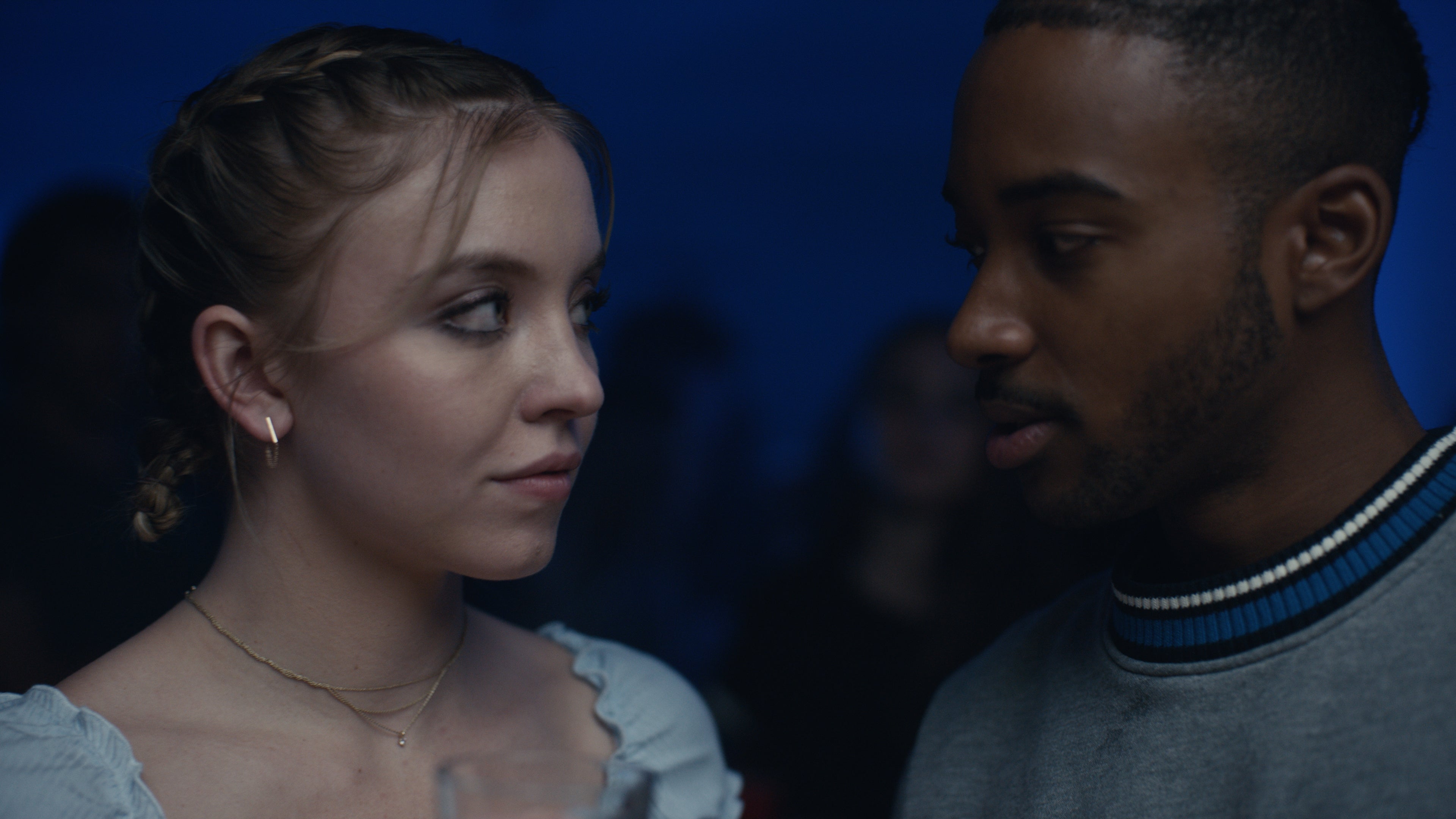From the extremes of Euphoria to the funny fumblings of Sex Education – how to get sex in teen dramas right
Whether it’s the racy shagging of ‘Skins’ or the chaste hand-holding of ‘Heartstopper’, coming-of-age shows have long approached on-screen intimacy from different angles. Isobel Lewis finds out the secrets of navigating the tricky genre, and how TV can educate as much as entertain


Your support helps us to tell the story
From reproductive rights to climate change to Big Tech, The Independent is on the ground when the story is developing. Whether it's investigating the financials of Elon Musk's pro-Trump PAC or producing our latest documentary, 'The A Word', which shines a light on the American women fighting for reproductive rights, we know how important it is to parse out the facts from the messaging.
At such a critical moment in US history, we need reporters on the ground. Your donation allows us to keep sending journalists to speak to both sides of the story.
The Independent is trusted by Americans across the entire political spectrum. And unlike many other quality news outlets, we choose not to lock Americans out of our reporting and analysis with paywalls. We believe quality journalism should be available to everyone, paid for by those who can afford it.
Your support makes all the difference.Sex? Young people today could take it or leave it. At least, that’s what researchers are saying. But look at the teen dramas out now, and you would think the opposite. After decades of adolescent sex on screen being represented through suggestive comments and strategically placed bed sheets (to prevent an offensive female nipple from sneaking in among the acceptable male ones), a new breed of teen show has emerged. Here you’ll find teenage characters, played by adult actors, stripping off and getting it on.
The teen show sexual revolution has arrived at a time when discussions about sex, gender, and consent are rife. While the TV industry is having big conversations about consent both on screen and behind the camera, we’re seeing the real-world impacts of a generation raised with constant access to pornography. For many, there’s a sense that teen dramas have a responsibility to provide an entertaining, yet educational, alternative. The question is – who’s actually getting it right?
Netflix has led the way on this subject. One more season remains of animated puberty comedy Big Mouth, while British secondary school series Sex Education comes to an end this week after four seasons. The quality of Laurie Nunn’s comedy-drama may have dipped in season three, but the show’s commitment to, well, sex education has remained. It’s set the bar for sex in teen shows: making them realistic, funny and informative in equal parts.
So, how did Sex Education do it? Think of the most realistic depictions of sex on screen in recent years. You might list Normal People, It’s a Sin, I May Destroy You. Behind them all, you’d find Ita O’Brien, an industry leader in filming intimate content. I speak to O’Brien over Zoom, her office filled with yonic artwork that would put Gillian Anderson’s sex therapist Jean Milburn to shame. A movement director, O’Brien started work as a dancer and actor, and began working with drama schools to create “consent-forward” guidelines regarding intimate scenes in the mid-2010s. For O’Brien, it just made sense that sex scenes, like dance or fighting, should be choreographed.
Her work gained wider recognition in the wake of the #MeToo movement, and O’Brien soon pioneered the role of the on-set intimacy coordinator. Fittingly, the show she was first three seasons) presented an equally refreshing narrative around sex and consent. “A lot of [the show’s] intimate encounters don’t go well and end up in disaster in some way,” O’Brien says. “It’s about comedy as well.” That tone was set from the very first vignette, which showed a “full-on”, unguarded and ungraceful sex scene between Aimee (Aimee Lou Wood) and boyfriend Adam (Connor Swindells). It perfectly captured the excruciating awkwardness of early sexual encounters; all clunky position changes, fumbled condoms and faked orgasms.
For Sex Education, that opening scene was a mission statement. “We had this conversation, saying, ‘Our young people are turning to pornography [because] there’s nowhere else for them to look,” she says. “[The creators] wanted this to be an alternative, really lifting the lid and helping open out the conversation about sexual content.” In a 2020 interview with Glamour, Wood said of that first season: “I thought, think of the young girls that are going to be watching this and going, ‘Oh thank God, that’s what I do,’ or, ‘We don’t always look perfect.’”
O’Brien stresses that Netflix shows shouldn’t be used in place of comprehensive, “age-appropriate” sex education, which she passionately believes should discuss “anatomy and consent boundaries” and how they integrate with emotions and relationships. Still, with sex ed in schools woefully lacking (my own consisted of horrifying pictures of sexually transmitted infections and watching Juno three times over the course of Year 9), Sex Education is far better than nothing.

But while O’Brien’s first experience as an intimacy coordinator came on a show unafraid to show masturbation montages and bodily fluids, productions with all levels of intimate content now use similar practitioners. There was an intimacy coordinator present on the set of Heartstopper, another jewel in Netflix’s teen drama crown. Based on Alice Oseman’s graphic novels of the same name, this queer coming-of-age series sits at the other end of the spectrum to Nunn’s shagfest. It follows teenagers Charlie (Joe Locke) and Nick (Kit Connor) as they chastely experience their first love, where the intimacy never goes beyond cuddling or kissing.
For director Euros Lyn, it was that “purity of emotion” that drew him to Heartstopper. “That simplicity of what it’s like to fall in love with somebody for the first time… especially while discovering that you might be gay or bisexual in your teens,” he says. Lyn wanted the show to “authentically” depict those teenage emotions, meaning Connor and Locke were just 16 and 17 when they filmed season one, and their parents were constantly involved in discussions. Intimacy coordinators intricately choreographed a first hand-hold or, in season two, a relatively racy kissing montage.

Watch Apple TV+ free for 7 days
New subscribers only. £8.99/mo. after free trial. Plan auto-renews until cancelled

Watch Apple TV+ free for 7 days
New subscribers only. £8.99/mo. after free trial. Plan auto-renews until cancelled
Discussions about sexuality and consent are still woven throughout Heartstopper, but for some viewers, its presentation of sexuality without sex felt anything but realistic. Writing about the show’s “strictly romantic” relationships in The Independent, Patrick Sproull argued that “by sidestepping sex to preserve the rose-tinted fairytale of Nick and Charlie, Heartstopper is denying itself the opportunity to authentically represent Gen Z queerness”. In one viral clip, the show was hilariously mocked by drag queens Trixie Mattel and Katya in their Netflix-affiliated YouTube series I Like to Watch. Mimicking the show’s dialogue, Katya asked: “Why would we f*** when we can smile at each other?”
Lyn understands this criticism of Heartstopper. “I think the truth is that different people travel through their romantic journeys and lose their virginity and have sex at different ages,” he says. “This is the journey for Nick and Charlie, and if other people feel that their journey was different… then that’s completely fine. But this is the nature of their relationship, and I think that’s fine as well.”

For some of Heartstopper’s younger fans, though, the lack of sex is what makes the show so appealing. Teenagers today have grown up with instant access to internet pornography, with a report released earlier this year finding that more than half have watched porn before turning 13. Feeling constantly bombarded by sex, gen-Z have had enough, with many arguing (in a never-ending cycle of online discourse) that sex scenes are always gratuitous and never “propel the story forward”.
I put this argument to O’Brien. “I feel that our art is both there to entertain and be escapism. To reflect humanity back to itself and pull us up short, or give us an opportunity to possibly heal wounds, and to be something that’s a really positive and important part of our humanity,” she says. “I think it’s really important that our intimate lives, our relationships, and therefore our sexual encounters, are included in our storytelling.”
Still, O’Brien is the first to admit that sex on screen, especially when depicting teenagers, isn’t always done well. Other teen shows have featured similar levels of explicit content to Sex Education or Normal People, but from a different, darker angle. My generation was raised on E4’s drug-fuelled drama Skins. Today, teens have the equally drug-fuelled Euphoria, HBO’s neon-lit series about recovering addict Rue (Zendaya) and her nearly-as-messed-up high school friends. When the show first aired in 2019, it was the use of sex and nudity that made headlines, largely categorised as mundane (a locker room full of men with their flaccid penises bobbing around) or violent. It felt like they were cheap attempts to shock.
There were also efforts to show the negative effects of pornography. In episode one of the first season, Cassie (breakout star Sydney Sweeney) is shown having sex with her college boyfriend McKay (Algee Smith) when he begins choking her until she shouts at him to “stop, stop”. “I thought you’d like that,” he tells her, genuinely bemused, with Cassie yelling back: “Why the f*** would I like that?”

When season one aired, I argued in defence of Euphoria’s use of sex and nudity. But by the time season two rolled around, things had begun to feel ickier. Multiple female cast members expressed discomfort in how many times they had been asked to appear naked in the script. In an interview with The Independent, Sweeney – who appeared topless in a number of episodes in both season one and two – remembered: “There are moments where Cassie was supposed to be shirtless and I would tell Sam, ‘I don’t really think that’s necessary here.’ He was like, ‘OK, we don’t need it.’”
Sweeney had made the comments in praise of Levinson; when she didn’t want to get naked, “he didn’t make me”. She had worked with an intimacy co-ordinator on the HBO show, which may have emboldened her to speak up – without them, O’Brien says, young actors often worry that “if you say, ‘No, I won’t be naked. I won’t do this. I don’t want to have someone with a hand around my neck,’” they will be seen as a “troublemaker”. Still, Sweeney’s remarks raised eyebrows among fans, who questioned why Levinson had asked her to be topless in so many scenes in the first place. The show was attempting to tackle issues, but it was hard not to feel like Euphoria was adding to the problem.
With the popularity of sexed-up shows like Levinson’s, Heartstopper arrived as a direct counterpoint. Lyn describes it as “an anti-Euphoria”, adding: “You can only say that because Euphoria exists, and I’m really pleased that it does exist. There are lots of shows on TV… and many, many depictions of teenagers having sex and getting it on, both in supportive relationships and in less supportive situations. This particular story, of Nick and Charlie and the pace at which their relationship forms, is ours.”
Age ratings don’t exactly mean a lot in the streaming era, but it’s telling that DVD versions of Heartstopper and Euphoria are rated as 12 and 18 respectively. The perfect teen show, it could be argued, would sit somewhere in the middle, aimed at actual teenagers rather than pre-teens or adults. After mocking Heartstopper, drag queen Trixie Mattel predicted backlash from fans, and stressed: “I don’t want them to have sex because I want to watch teenagers have sex. I want it to be closer to real.”
Sex Education, it could be argued, has occupied that middle space for the past four years. As it comes to an end, I’m left wondering what else can take its place. Will another teen show step in, with a similarly positive stance on sex and nudity? Or could Heartstopper grow up and fill the gap in its forthcoming third season? Possibly. Either way, Sex Education, and the ground it broke, will undeniably be missed. This programme showed sex as it was: (genital) warts and all.
‘Sex Education’ season four is on Netflix now



Join our commenting forum
Join thought-provoking conversations, follow other Independent readers and see their replies
Comments